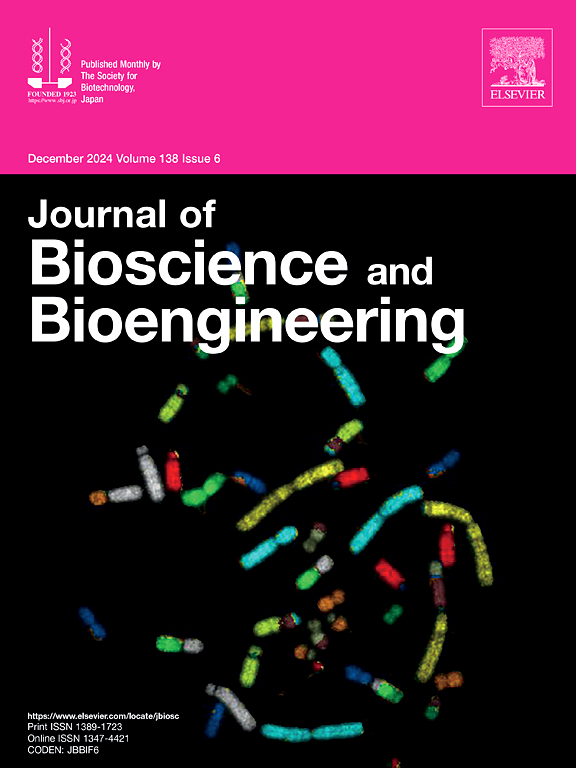Metagenomic profiling of antibiotic resistance genes and their associations with the bacterial community along the Kanda River, an urban river in Japan
IF 2.9
4区 生物学
Q3 BIOTECHNOLOGY & APPLIED MICROBIOLOGY
引用次数: 0
Abstract
Antibiotic resistance genes (ARGs) present in urban rivers have the potential to disseminate antibiotic-resistant bacteria into other environments, posing significant threats to both ecological and public health. Although metagenomic analyses have been widely employed to detect ARGs in rivers, our understanding of their dynamics across different seasons in diverse watersheds remains limited. In this study, we performed a comprehensive genomic analysis of the Kanda River in Japan at 11 sites from upstream to estuary throughout the year to assess the spread of ARGs and their associations with bacterial communities. Analysis of 110 water samples using the 16S rRNA gene revealed variations in bacterial composition corresponding to seasonal changes in environmental parameters along the river. Shotgun metagenomics-based profiling of ARGs in 44 water samples indicated higher ARG abundance downstream, particularly during the summer. Weighted gene co-expression network analysis (WGCNA) linking bacterial lineages and ARGs revealed that 12 ARG subtypes co-occurred with 128 amplicon sequence variants (ASVs). WGCNA suggested potential hosts for ErmB, ErmF, ErmG, tetQ, tet (W/N/W), aadA2, and adeF, including gut-associated bacteria (e.g., Prevotella, Bacteroides, Arcobacter) and indigenous aquatic microbes (e.g., Limnohabitans and C39). In addition, Pseudarcobacter (a later synonym of Arcobater) was identified as a host for adeF, which was also confirmed by single cell genomics. This study shows that ARG distribution in urban rivers is affected by seasonal and geographical factors and demonstrates the importance of monitoring rivers using multiple types of genome sequencing, including 16S rRNA gene sequencing, metagenomics, and single cell genomics.
日本城市河流神田川沿岸抗生素耐药性基因及其与细菌群落关系的元基因组分析。
城市河流中的抗生素耐药基因(ARGs)有可能将抗生素耐药细菌传播到其他环境中,从而对生态和公共健康构成重大威胁。尽管元基因组分析已被广泛用于检测河流中的 ARGs,但我们对其在不同流域不同季节的动态变化的了解仍然有限。在本研究中,我们对日本神田川从上游到河口的 11 个地点全年进行了全面的基因组分析,以评估 ARGs 的传播及其与细菌群落的关联。利用 16S rRNA 基因对 110 份水样进行的分析表明,细菌组成的变化与沿河环境参数的季节性变化相对应。基于射枪元基因组学的 44 个水样中的 ARGs 分析表明,下游的 ARGs 丰度较高,尤其是在夏季。加权基因共表达网络分析(WGCNA)将细菌谱系与 ARGs 联系起来,发现 12 个 ARG 亚型与 128 个扩增序列变体(ASVs)共存。WGCNA 提出了 ErmB、ErmF、ErmG、tetQ、tet (W/N/W)、aadA2 和 adeF 的潜在宿主,包括肠道相关细菌(如 Prevotella、Bacteroides、Arcobacter)和本地水生微生物(如 Limnohabitans 和 C39)。此外,假arcobacter(后来成为 Arcobater 的异名)也被确定为 adeF 的宿主,这一点也得到了单细胞基因组学的证实。这项研究表明,ARG 在城市河流中的分布受季节和地理因素的影响,并证明了使用多种基因组测序方法(包括 16S rRNA 基因测序、元基因组学和单细胞基因组学)监测河流的重要性。
本文章由计算机程序翻译,如有差异,请以英文原文为准。
求助全文
约1分钟内获得全文
求助全文
来源期刊

Journal of bioscience and bioengineering
生物-生物工程与应用微生物
CiteScore
5.90
自引率
3.60%
发文量
144
审稿时长
51 days
期刊介绍:
The Journal of Bioscience and Bioengineering is a research journal publishing original full-length research papers, reviews, and Letters to the Editor. The Journal is devoted to the advancement and dissemination of knowledge concerning fermentation technology, biochemical engineering, food technology and microbiology.
 求助内容:
求助内容: 应助结果提醒方式:
应助结果提醒方式:


